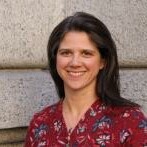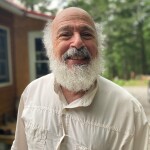Cutting-edge researchers and clinicians from North America presented at this year’s annual conference of the Oncology Association of Naturopathic Physicians (OncANP). In a stirring keynote, Dan Rubin, ND, FABNO, the founding president of the organization, reminded the oncology-focused audience that their journey requires endurance and confidence in what they do.
"Here's to those who believe," said Rubin. "Here’s to the Mavericks, to the movers, to the mentors, the ones who see things differently. They are not afraid to be creative and certainly not satisfied with the status quo. They seek answers. They push medicine forward, give it depth. For the physicians who are bold enough to think that they can do something great, are the ones who do.”
The conference curriculum did, in fact, feature bold content anchored by scientific research and yet clinically creative enough to tell a compelling story. Researchers and clinicians covered topics such as the human microbiome and cancer, cannabis, and copper chelation. There was even a law lecture that covered the risks involved whenever naturopathic physicians market, practice and communicate with the public, their patients or fellow professionals.
There were many highlights from this year’s conference. Lise Alschuler, ND, FABNO, provided a clinically relevant discussion on using an integrative protocol for the management of recurrent ovarian cancer,. Using patient cases as examples, Alschuler described scientific rationale regarding diet and supplement recommendations in this patient population.
Jeanne Drisko, MD, answered key questions about intravenous vitamin C (IVC) as she described the scientific studies using this adjuvant treatment method alongside chemotherapy. Drisko also mentioned she is beginning a new research project that will include the use of IVC in combination with hyperbaric oxygen and a ketogenic diet.
Speaking of the ketogenic diet, Thomas Seyfried, PhD, reviewed his work on cancer as a metabolic disease, and proposed a ketogenic diet may be one means of withholding the nutrients necessary for growth. He said that the ketogenic diet alone may not kill cancer but when used in combination with other therapies, there is some evidence of positive patient outcomes. A key factor with the ketogenic diet is that it is an extreme diet that requires medical supervision, limiting its widespread use or adoption. Nonetheless, it may be of particular benefit for certain patients, including those with brain tumors.
Another dietary approach was presented by Valter Longo, PhD. Based on Longo’s own research, as well as other studies, Longo explained that fasting or fasting mimicking diets can provide effective adjuvant cancer treatment via increased cytotoxicity. Longo said that fasting alone will work for a few cycles but eventually the cancer cells become resistant to the effects of fasting alone. No such resistance is seen when fasting is used in combination with chemotherapy or radiation. Longo also compared and contrasted fasting to the ketogenic diet and showed evidence that short term fasting may be more effective. Longo explained that patient compliance is better with fasting. His more recent studies allowed patients to eat a specific 500 calorie/day diet on the fasting days which decreased drop out rate dramatically while still producintd significant clinical results.
Gurdev Parmar, ND, FABNO, presented interesting data utilizing logo-regional hyperthermia and fever-range whole body hyperthermia at his integrative oncology setting in Canada. Hyperthermia has been shown to have direct cytotoxic effects, and to augment conventional therapies. Parmar’s preliminary results in a large number of patients confirmed the cytotoxic activity of hyperthermia in several different types of cancer with the most dramatic effects demonstrated in colon cancer.
Another interesting clinical presentation was by Akbar Khan, MD, in which he described the use of copper chelation in his clinical practice in Toronto. Khan has demonstrated statistically significant results in the approximately 300 patients that he has treated using this adjuvant therapy. He expressed his disappointment that more research is not being done and does not understand why this therapy has not been widely accepted.
For physicians interested in using homeopathy in their clinical practice, Jen Green, ND, FABNO, and Paul Saunders, PhD, ND, gave practical advice illustrated by case studies and the scientific literature. They explained that homeopathy can play a key role in offsetting side effects of conventional treatments. Green mentioned that this is one area where animal data can be compelling because it removes the oft cited criticism of homeopathy, the placebo effect.
From a research overview perspective, there were several talks that provided the audience with information they could apply to their clinical practice. Drs Heather Greenlee, ND, PhD, and Suzanna Zick, ND, MPH, provided clarification on controversial data and emphasized the need for research literacy on the part of the practicing physician. Greenlee and Zick also emphasized the need for more well designed studies on various natural medicines and mentioned the Society of Integrative Oncology is actively creating guidelines for integrating complementary medicine into oncology.
The diverse and compelling lectures combined with the passionate and inquisitive audience engagement provided a glimpse into the evolving world of naturopathic oncology. Attendees came to improve patient care through education. They left inspired as well as informed.
Perhaps Rubin said it best in his opening keynote, “Cancer is a disease that requires individualized treatment that is as physiological as we can attain, with constant reverence for the mystery and beauty of the human body, even in illness.”








